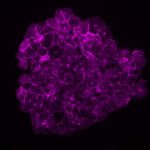Link to Pubmed [PMID] – 28678779
Link to DOI – 10.1038/nature23009
Nature 2017 07; 547(7662): 213-216
The lifestyle of intracellular pathogens, such as malaria parasites, is intimately connected to that of their host, primarily for nutrient supply. Nutrients act not only as primary sources of energy but also as regulators of gene expression, metabolism and growth, through various signalling networks that enable cells to sense and adapt to varying environmental conditions. Canonical nutrient-sensing pathways are presumed to be absent from the causative agent of malaria, Plasmodium, thus raising the question of whether these parasites can sense and cope with fluctuations in host nutrient levels. Here we show that Plasmodium blood-stage parasites actively respond to host dietary calorie alterations through rearrangement of their transcriptome accompanied by substantial adjustment of their multiplication rate. A kinome analysis combined with chemical and genetic approaches identified KIN as a critical regulator that mediates sensing of nutrients and controls a transcriptional response to the host nutritional status. KIN shares homology with SNF1/AMPKα, and yeast complementation studies suggest that it is part of a functionally conserved cellular energy-sensing pathway. Overall, these findings reveal a key parasite nutrient-sensing mechanism that is critical for modulating parasite replication and virulence.


